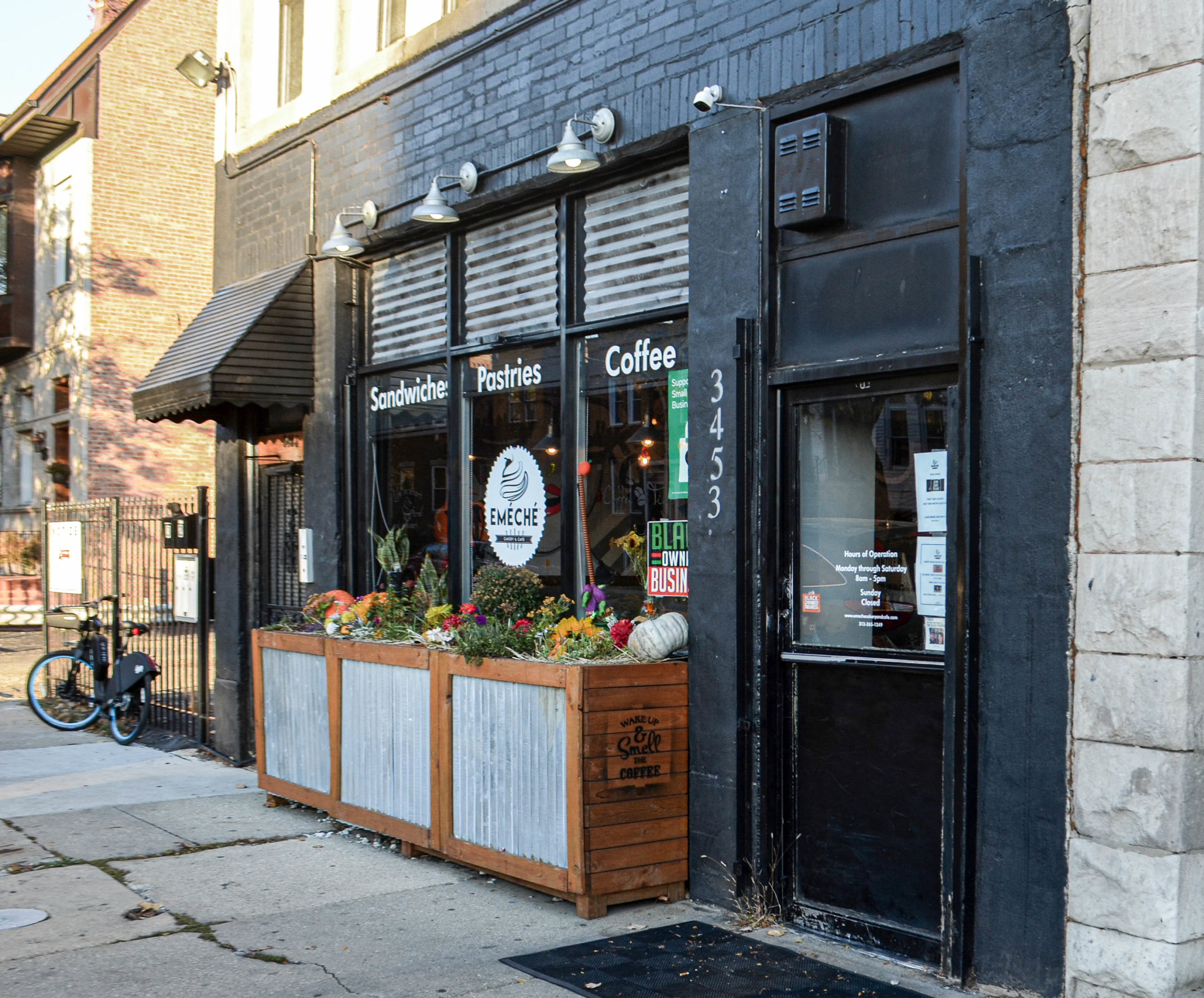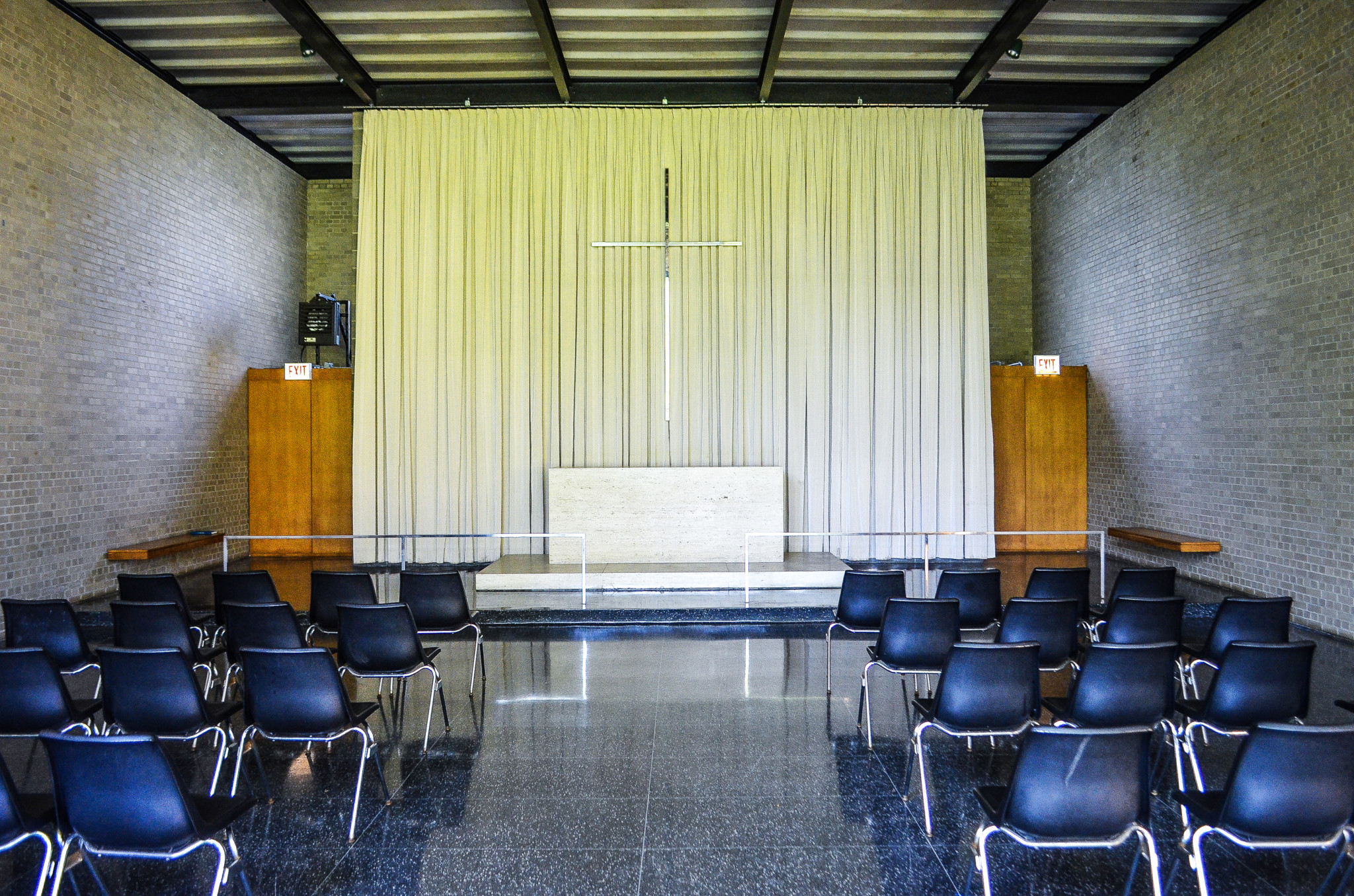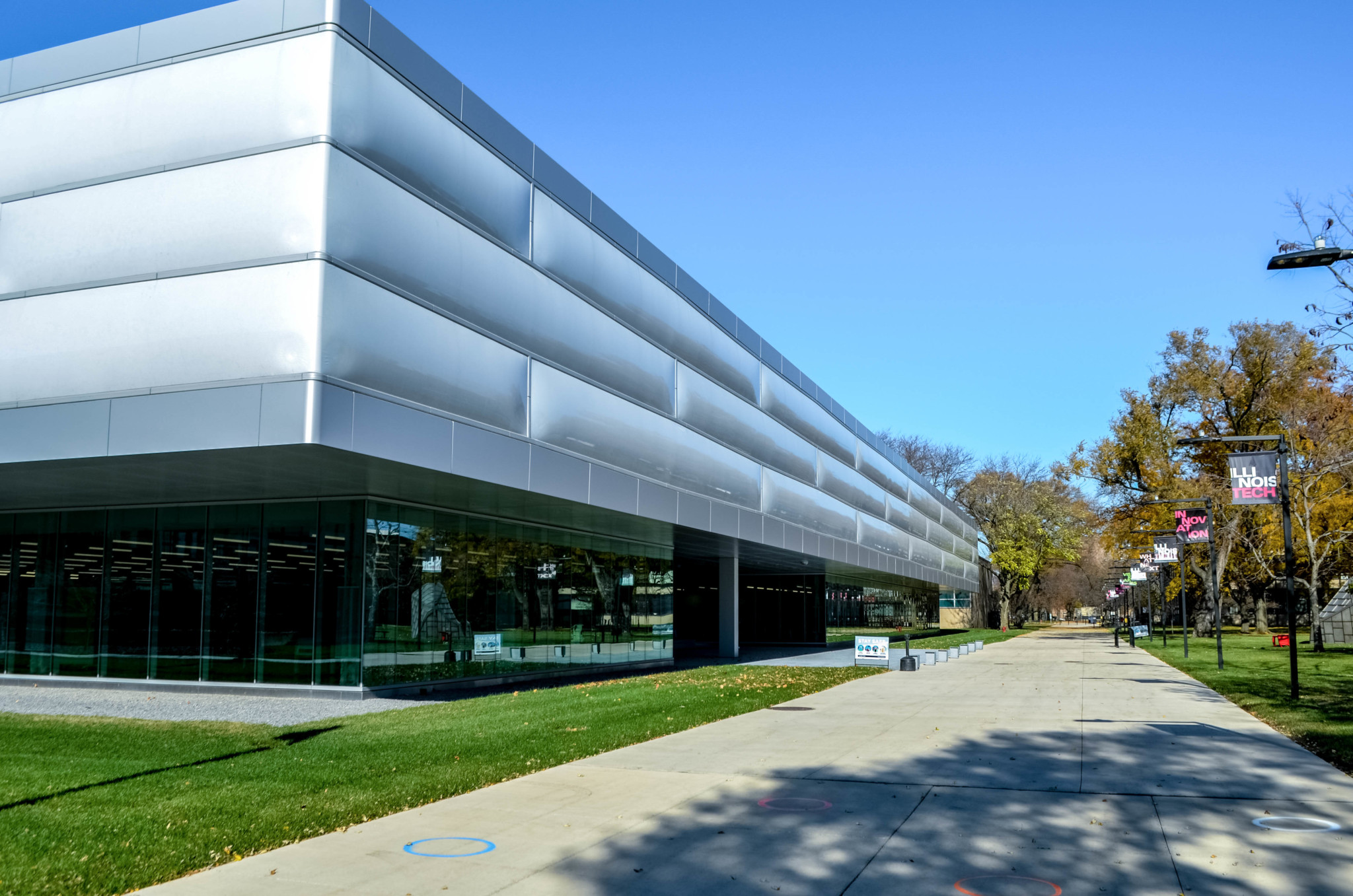My parents were born in the South and were part of the great migration to the North.
My father was born October 8, 1919 in Mississippi. He was the youngest of three children. When my grandmother was birthing dad, she experienced complications. My father’s difficult birth took a toll on my grandmother. She likely went untreated and in lots of pain. She died when my father was two years old. Without a stable caregiver, my grandfather packed up and moved his family to Chicago, seeking a better life in what we now call Bronzeville.
My mother was born in Louisiana on September 11, 1921. My grandfather died of complications of a non-medically treated appendicitis. His family treated him with heat packs instead of ice packs. By the time my grandpa reached a hospital that accepted Negro patients, it was too late. He died shortly after his arrival at the hospital.
My mother was nine years old when my grandmother made the decision to migrate north to Chicago, to seek a better life for her kids. Once in Chicago, my grandmother and her four children moved in with family, in what’s now Bronzeville.
As Black Southerners faced the Ku Klux Klan, racism, lynching, and lack of job opportunities in the South, Chicago became one of the largest Northern cities for Black migration. Between 1910 and 1970, over six million people migrated from the South to the North. Being a lifelong Chicagoan, my city is still one of the most segregated cities in the country.
The Chicago Defender played a pivotal role in encouraging Black Southerners to migrate to cities in the North and the West. Between 1910 and 1920 alone, the percentages of Black people moving to the major Northern cities—mostly for industrial work—dramatically increased. In this ten-year migration span, New York saw an increase in the Black population of sixty-six percent, Chicago 148 percent, Philadelphia 500 percent, and in Detroit, 611 percent.
Richard Wright’s “The One-Room Kitchenette” expresses the exuberance of leaving the South to the true reality of living on Chicago’s South Side as a colored person. I wish I could have delved deeper into my grandparents’ lives in the South.
I end with sharing parts of Mr. Wright’s “The One-Room Kitchenette” and contemplate being in his shoes, his family’s shoes, your shoes. Wright’s prose is truthful, powerful, and was and still is the reality for so many people today:
“Our time has come! We are leaving! We are angry no more; we are leaving! We are leaving homes, pulling up stakes to move on.
“We see white men and women get on the train, dressed in expensive new clothes. We look at them guardedly and wonder will they bother us. Will they ask us to stand up while they sit down? Will they tell us to go to the back of the coach?
“We pay the conductor our fare and look apprehensively for a seat. We were told that we can sit where we please, but we are still scared. We cannot shake off the three hundred years of fear in three hours.
“What they do is this: they take, say, a seven-room apartment, which rents for $50 a month to whites, and cut it up into seven small apartments, of one room each; they install one small gas stove and one small sink in each room. The Bosses of the Buildings rent these kitchenettes to us at the rate of, say $6 a week. Hence, the same apartment for which white people – who can get jobs anywhere and who receive higher wages than we – pay $50 a month is rented to us for $42 a week!
“The kitchenette is the funnel through which our pulverized lives flow to ruin and death on the city pavements, at a profit.” (Bridget Vaughn)
Neighborhood Captain Bridget Vaughn is a contributor to the Weekly and a senior engagement officer with the Illinois Institute of Technology.
Best Good News
The Future National Museum of Gospel Music
“I think it’s my God-given challenge, to try and get this building back,” said Cynthia Jones, chairwoman of Pilgrim Baptist Church.
Jones could relay a lifetime of memories from the church’s pews. It was “a megachurch before megachurches became prominent,” she said. “If you didn’t get there by 10 o’clock, you didn’t get a seat.”
What everyone remembers, however, are the names. Legends like Mahalia Jackson sang there regularly throughout the twentieth century. Bessie Coleman was part of the congregation. On one occasion, Martin Luther King Jr. preached from the pulpit. And above all, Pilgrim Baptist was home to music director Thomas A. Dorsey, the immortal “Godfather of Gospel.”
As the years passed, Pilgrim faced trying times. By the turn of the century, attendance was in steep decline. In 2006, a fire burned everything, save the walls, to the ground.
But Pilgrim—named Best Once and Future Church in 2015 BoSS—is hallowed ground: no ordinary church, with no ordinary history. When Jones, who’s been working to restore it since 2001, said “it seems like I have been pregnant with this building for nineteen years,” she was only half joking. So in 2017, when Don Jackson, of the DuSable Museum and Stellar Gospel Awards, suggested a National Museum of Gospel Music to Jones, she joined in. The rest is history in the making.
“Not many museums get the opportunity to be on the ground where the history was made,” said Antoinette Wright, president and executive director of the museum. She’s drawn upon decades of friendships, connections, and personal histories to tell a story that spans centuries: recent collaborators include Robert Marovich of the Journal of Gospel Music website; Sasha Daltonn, the founder of the Chicago Gospel Festival; and Reverend Stanley Keebles, an elder statesman of gospel history.
Wright has worked closely with the families of Pilgrim’s gospel pioneers, preserving histories that might have otherwise vanished. She spoke with her mother about growing up with the Barrett Sisters, and received an archive of Roberta Martin’s materials from one of Martin’s children. Thomas Dorsey III has contributed his grandfather’s memoir, which was found in an attic some years back.
Above all, Wright treasures the stories that need to be told for the first time. “I think it’s important that we capture as much of those living legends as possible—I have an affinity toward first-person voices, because those are the items that close the gaps, the missing items of history,” she said.
Wright hopes that the museum can convey not just the depth of gospel’s roots in the Black tradition, but the complexity of its history. She takes an interest in the reinterpretations and translations of standards like “Amazing Grace”: a hymn penned by an English clergyman involved with the Atlantic slave trade; a hymn that became a definitive Black spiritual. And Pilgrim National Baptist was originally built as a synagogue, after all.
“I want to make sure that everybody understands this is not an African-American story, it’s a peoples’ story. There’s Asian gospel choirs, there’s the Soweto gospel choir. The music is a part of every culture, and it’s comfortably accepted not as Black music, but as the people’s music,” Wright said. Jones, too, sees an international audience for the National Museum of Gospel Music: “Every year, people come to the ruins—people from China, from Pakistan, from [other parts of] Asia—people that just want to touch the walls, just be there and be part of it.”
There’s still a ways to go before that museum is open, especially after the 2020 derecho knocked down one of the surviving walls in August. But for Wright, the National Museum of Gospel Music will be a museum without walls. As Bronzeville and Chicago have rallied around the cause in recent years, it’s become possible to see that museum taking shape. In 2018 and 2019, the organization held concerts at nearby Apostolic Faith Church, which were open to the public and filled to capacity. (“That’s what we wanted the music to be, you know, to be free and flowing,” Wright said.) In 2019, pastors and gospel singers from across Chicago came together to bless the site.
“You’ll find a philanthropist that will give you a million dollars, a half-million dollars—but it takes the community’s everyday support for sustainability, for any museum or community building like that. And we have that here. People in Chicago are waiting anxiously to see this building, to be part of it,” Jones said.
And even in uncertain times, they’re set on this path.
“What I’d like to say is that I’d like to be around to see that building,” said Jones. “I’ve been working on it for nineteen years, from restoration to rebuilding. And I’m looking forward to walking into that museum, just smiling and seeing the completion of it.” (Christopher Good)
Pilgrim Baptist Church and future National Museum of Gospel Music, 3301 S. Indiana Ave. nationalmuseumofgospelmusic.org
Best New Cakery
Eméché Cakery and Café

After selling her baked goods in New York, Janelle Richmond moved to Chicago and began selling her alcohol-infused cupcakes at the southwest suburban Chicago Ridge Mall. In the fall of 2019, Eméché (French for “tipsy”) relocated to an adorable spot in Bronzeville. The staff are friendly and helpful and the atmosphere is welcoming and comfortable. The décor makes you want to stick around to read a book or work while you eat and drink—which in non-COVID times you’d be welcome to do. Since moving into the new location, the café has expanded its offerings to include more alcohol-infused desserts and a simple and tasty lunch menu. (Bridget Vaughn)
Eméché Cakery and Café, 3453 S. Prairie Ave. Monday–Saturday, 8am–5pm; closed Sunday. (312) 265-1249. emechecakeryandcafe.com
Best Historical Chessboard
Architecture of the Illinois Institute of Technology

Wandering around the campus of the Illinois Institute of Technology (IIT), it can feel a little like walking a chessboard, albeit one populated by black and beige buildings positioned in some inscrutable pattern. The original master plan, designed by Ludwig Mies van der Rohe is, in fact, a twenty-four-square-foot grid, and looks more systematic at a God’s-eye angle than from the perspective of a pawn straying illicitly off the sidewalk.
S.R. Crown Hall, which houses the College of Architecture, is the most famous of the Mies buildings. Generally described as airy and slight, its slim black frame is in fact wonderfully menacing: the two central girders, symmetrically receding from view over a set of marble steps, look like a pair of furrowed eyebrows. There’s no need to wonder what kind of academic terror the architecture students inside are being subjected to, thankfully, since the large glass windows let anyone see right through and the girders support a suspended roof, leaving the interior devoid of columns (though there are usually some dividers).
Chicago architect Stanley Tigerman, who died last year, wrote in 1986 that the “central constituent feature” of Mies’ work was “measurement.” I couldn’t tell you exactly what he means, but it rings true—the windows and panels of Crown Hall are sliced into subdivisions by the frame, until the exterior is all smaller squares and rectangles you can pull apart and stack up again, or doodle your way into with a ruler and some graph paper.
Tigerman also poked fun at Crown Hall, or the reverence others had for it and the rest of Mies’ portfolio, when he made “The Titanic,” his 1978 photo collage showing the building sinking into Lake Michigan at a steep angle.
While Crown Hall capsizes into the water at the Art Institute, where Tigerman’s piece is housed, the soil where it actually stands has come up to meet it. A few years ago, during a routine bit of maintenance work, IIT uncovered some artifacts from the Mecca Flats, an apartment building that was once home to Gwendolyn Brooks and other residents of Bronzeville, the spiritual center of the city’s growing Black Belt.
In the early twentieth century, the administration at IIT tried moving the school out of the neighborhood, anxious about the influx of Black immigrants from the South into the area. When that failed, the school instead engaged in a project of slum clearance, buying up apartments and demolishing them. After purchasing the Mecca, the university practiced its own kind of measurement, partitioning and subdividing apartments, neglecting them until residents wanted to leave.
When that failed to get rid of everyone, IIT began to evict tenants. After a drawn-out court battle, it succeeded in 1950; Mies began designing Crown Hall that year, and finished it in 1956. Two years after the discovery of the artifacts, there’s still no visible commemoration of the Mecca’s residents, or any of the other people or buildings displaced by IIT, on campus. (Christian Belanger)
Core campus of the Illinois Institute of Technology, bounded by W. 31st St., S. State St., W. 35th St., and S. La Salle St.




Great information Bridget Vaughn